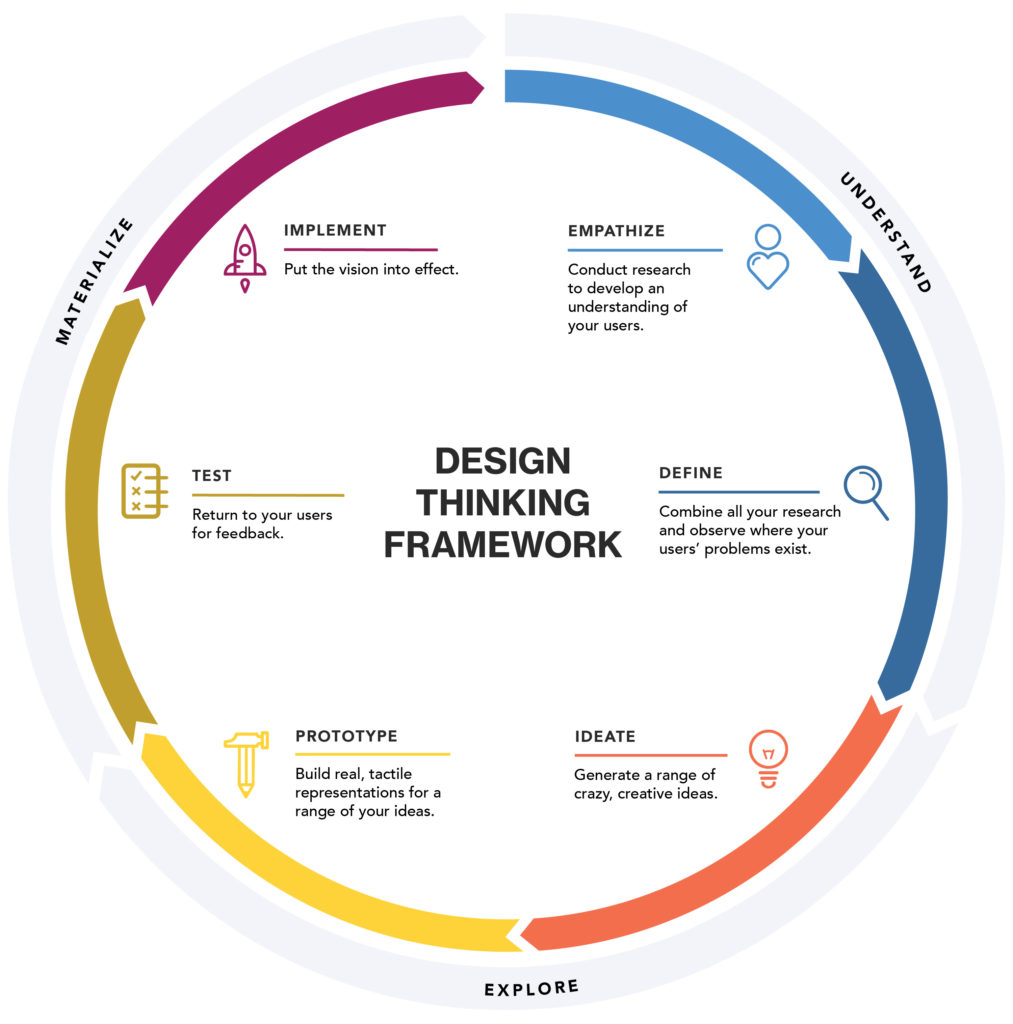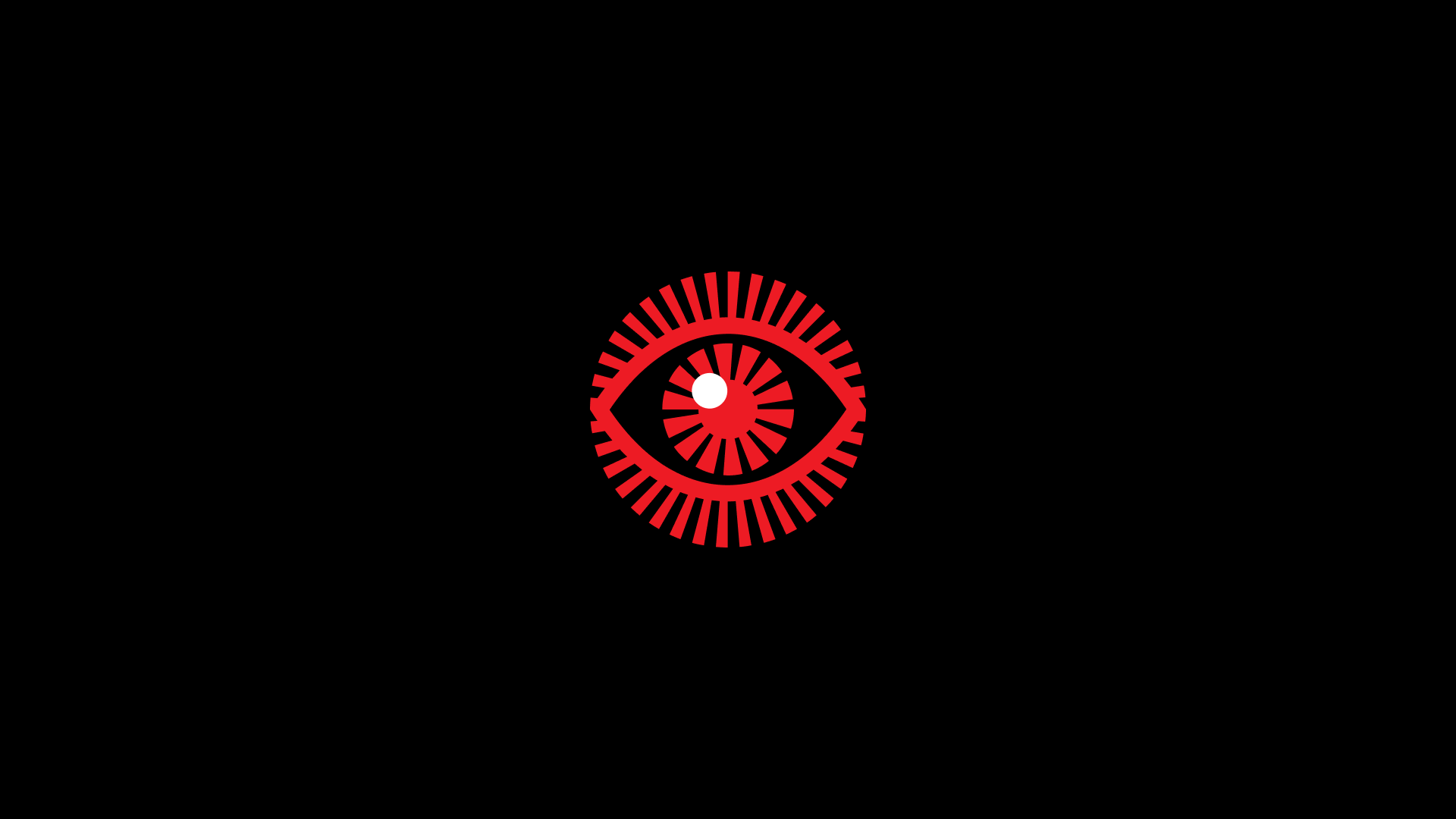Design thinking is a user-centered process that starts with user data, creates design artifacts that address actual and not imaginary user needs, and then tests those artifacts with real users.
The framework leverages collective expertise and establishes a shared language and buy-in amongst your team. It also encourages innovation by exploring multiple solutions for the same problem.
The design thinking framework follows an overall flow of 1) Understand, 2) Explore, and 3) Materialize. Within these larger buckets fall the 6 phases: Empathize, Define, Ideate, Prototype, Test, and Implement.

Understand →
Empathize →
Understand your users by researching what they do, say, think, and feel. For example, to improve the onboarding process for new users, talk to them directly and observe their actions, thoughts, and desires. Ask questions like “What makes them happy or unhappy?” or “Where do they face problems?” This helps you empathize with users and understand their viewpoints.
Define →
Analyze all the research you gathered to determine where your users face problems. Look for patterns in their needs and find opportunities to make things better. Using the onboarding example, in the define phase, use the information you collected earlier to understand your users better. Group all your findings together and see if there are common user issues. Figure out what your users lack and need.
Explore →
Ideate →
Come up with wild and creative ideas to solve the problems you found earlier. Don’t hold back – let your imagination run wild! It’s more about quantity than quality. During this phase, gather your team and brainstorm different ideas. Encourage everyone to share their thoughts freely and build on each other’s ideas.
Prototype →
Create tangible versions of some of your ideas to see what works and what doesn’t. The aim is to see how practical your ideas are and how effective they might be. Get feedback on these prototypes to refine your ideas further.
For instance, if you’re designing a new landing page, sketch a basic layout and get feedback from your team. Adjust it based on their input, then create a simple prototype using basic code. Share it with others for more feedback.
Materialize →
Test →
Go back to your users and see what they think. Ask yourself if your solution helps them and if it changes how they feel or act. Show your prototype to real customers and see if it works like you hoped. Did onboarding get better for them? Does the new landing page make them spend more time or money on your site? Keep testing as you work on your project.
Implement →
Make your idea a reality. Ensure your solution happens and makes a difference to the people using it. This step is crucial in design thinking, but it’s often overlooked. Don’t forget that design thinking isn’t just about coming up with ideas – you must make things happen. It’s not magic; it’s about putting in the work to create real change.
“There’s no such thing as a creative type as if creativity is a very time-consuming verb. It’s about taking an idea in your head and transforming it into something real. And that’s always going to be a long and difficult process. If you’re doing it right, it will feel like work.”
— Milton Glaser
Design thinking can be powerful for an organization but only brings real innovation if the vision is implemented. The key to success with this framework is making a real difference in the lives of those who use your product or service. The sixth step, implementing the solution, is vital for this to happen.
Design thinking offers significant advantages for product development. It’s all about putting users first, using their data to create designs that meet real needs, and testing these designs with real users. It also brings your team together, tapping into everyone’s expertise and creating a common understanding. Design thinking sparks innovation by exploring different solutions to the same problem.
As Jakob Nielsen puts it, even an excellent interface will fail if it’s solving the wrong problem. Design thinking ensures creative efforts are directed toward the correct issues, maximizing their impact.
We live in an era of experiences, be they services or products, and we’ve come to have high expectations for these experiences. They are becoming more complex as information and technology continue to evolve. With each evolution comes a new set of unmet needs. While design thinking is simply an approach to problem-solving, it increases the probability of success and breakthrough innovation.
Resources
↗ Design Thinking: The Ultimate Guide
↗ The Double Diamond: Strategy + Execution of the Right Solution
↗ IDEO Design Thinking Resources

